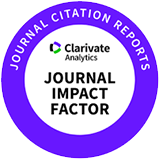Reducing methane emissions in Tibetan sheep at high altitudes through indoor feeding of a low-fibre total mixed pellet diet
Abstract
This study aimed to the effects of low-fibre total mixed diets on ruminal microorganisms and the potential mechanisms of methane (CH<sub>4</sub>) reduction in high-altitude regions remain understudied. In this study, 18 Tibetan sheep of the same age and weight were divided into two groups at random: the grazing group (GF, control) and the house-feeding group (HF). The GF group grazed on natural pasture, while the HF group was fed a low-fibre total mixed pellet diet indoors. The experiment lasted 78 days, and CH<sub>4</sub> emissions were measured via gas exchange in CH<sub>4</sub> emissions monitoring cage during the final three days. The results showed that compared to the GF group, the HF group had significantly higher dry matter intake and average daily gain (<italic>p</italic> < 0.01), and the animals in the HF group experienced an hour delay in the onset of peak CH<sub>4</sub> emissions and had significantly lower (<italic>p</italic> < 0.05) CH<sub>4</sub> emissions per unit of intake and per unit of weight gain. Additionally, the total volatile fatty acid concentration and molar proportion of propionic acid were significantly higher (<italic>p</italic> < 0.01) in the HF group than in the GF group. Rumen metagenome analysis revealed a significant reduction (<italic>p</italic> < 0.05) in rumen microbial diversity in the HF group. Regarding the bacterial composition, the relative abundances of <italic>Prevotella</italic> and <italic>Ruminococcus</italic> were significantly higher (<italic>p</italic> < 0.05), while the abundance of <italic>Butyrivibrio</italic> was significantly lower (<italic>p</italic> < 0.05) in the HF group. Regarding archaeal composition, the relative abundances of the <italic>Methanobrevibacter</italic> genus and <italic>Methanobrevibacter millerae</italic> were significantly higher (<italic>p</italic> < 0.05) in the HF group, whereas the relative abundance of unclassified<italic>_f_Candidatus Methanomethylophilaceae</italic> was significantly lower (<italic>p</italic> < 0.05). Furthermore, the relative abundances of several enzymes involved in methanogenesis (EC: 2.1.1.90, EC: 2.1.1.246, EC: 2.1.1.247, EC: 2.1.1.248, EC: 1.8.7.3, EC: 1.8.98.1, EC: 1.8.98.4, EC: 1.8.98.5 and EC: 1.8.98.6) were significantly reduced (<italic>p</italic> < 0.05) in the HF group. Overall, feeding low-fibre total mixed pellets indoors could reduce CH<sub>4</sub> emissions by modulating the rumen microbiota. This study’s findings provided a valuable reference for optimising feeding management in high-altitude regions to mitigate CH<sub>4</sub> emissions from ruminants.
















